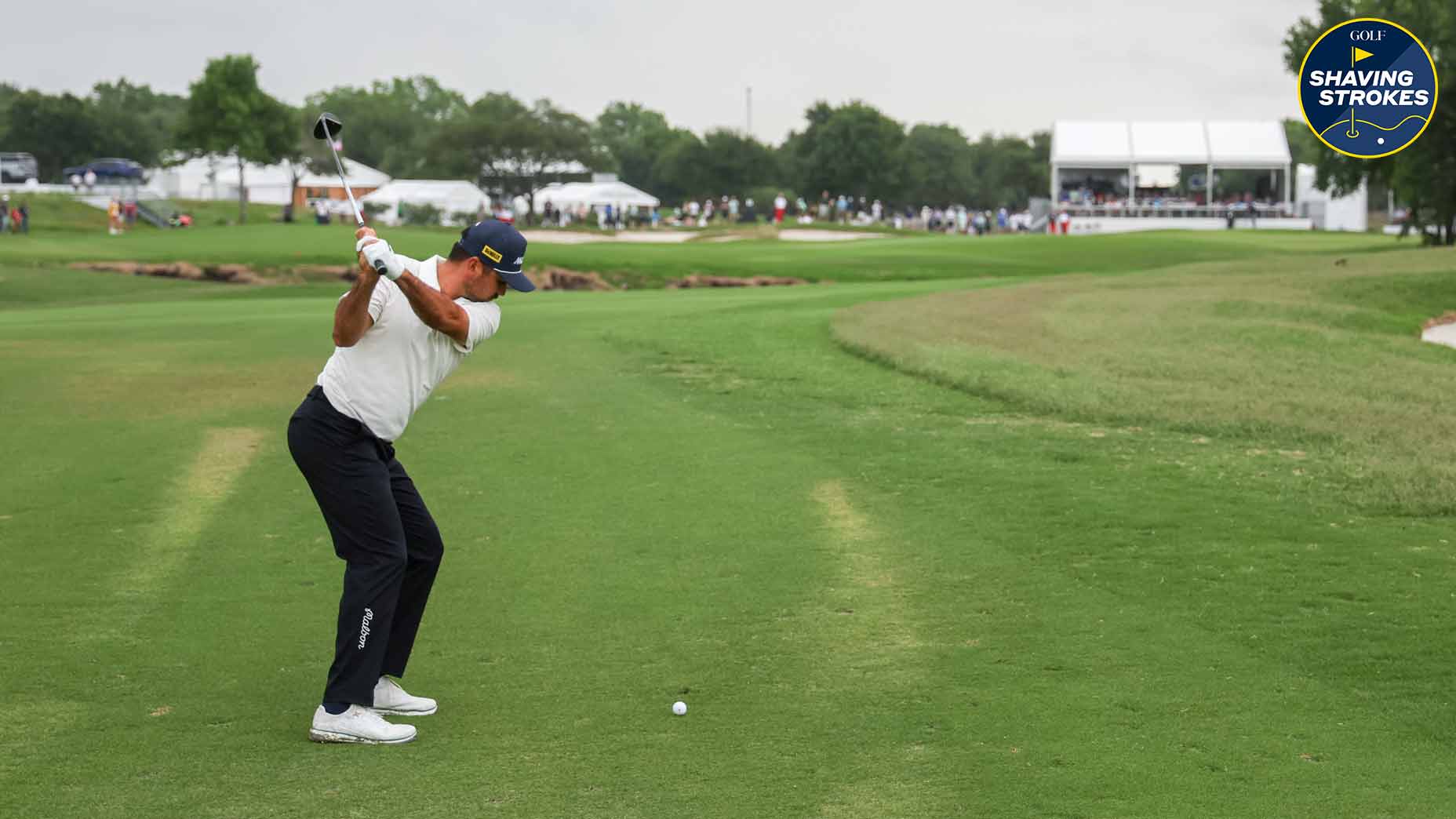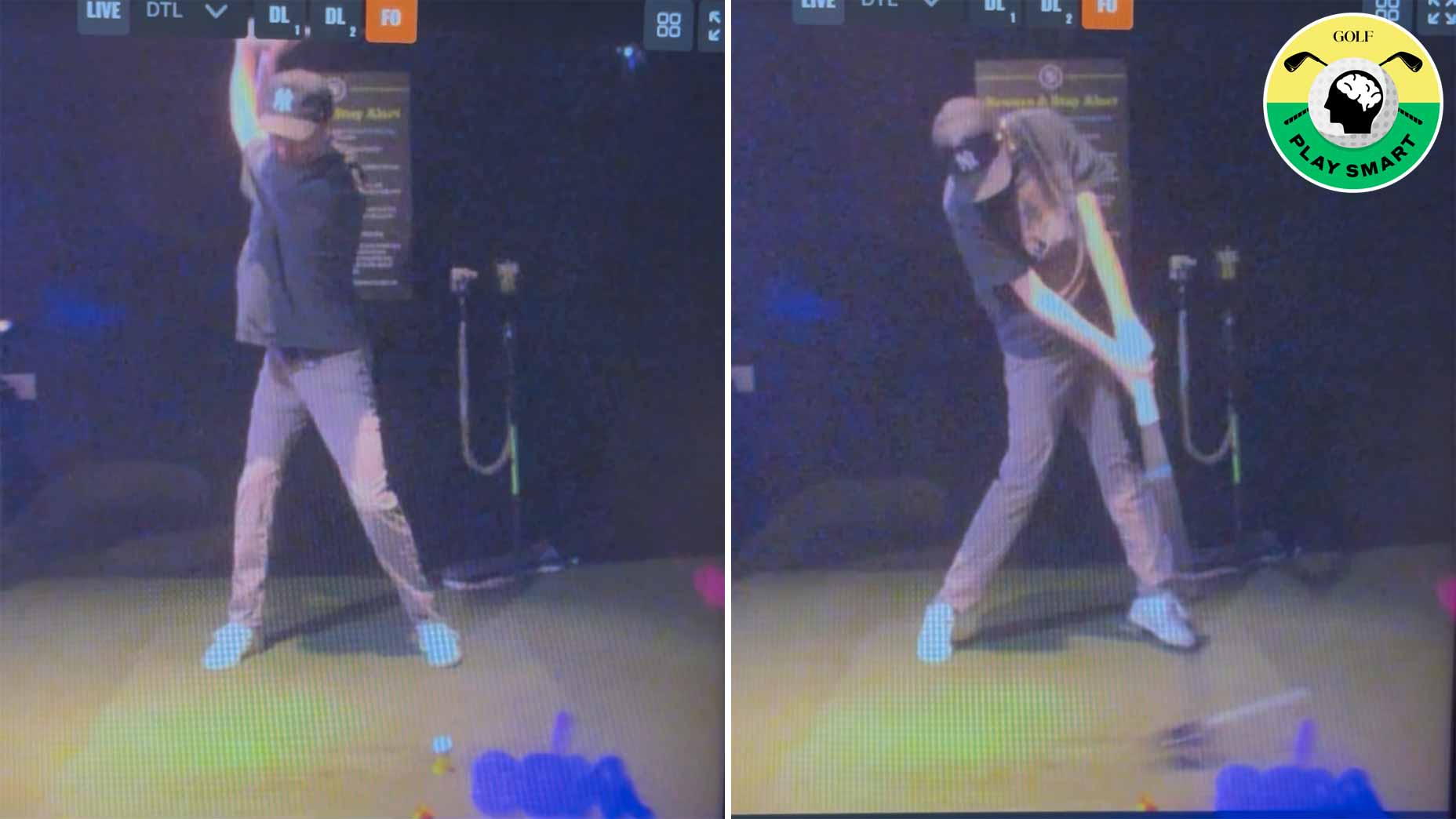Whether you want to admit it or not, most golfers are creatures of habit — especially when it comes to their practice routine.
Most of us either grab a driver or a 7-iron to start, beat balls over and over until we feel good, then gradually move through the rest of our golf bag to ensure we hit a few decent shots with each club.
Sure, there’s often some structure — like hitting three drives to a target before moving to another club — but in most cases, it’s pretty loose in terms of a game plan.
If you want to get better, though, that needs to change.
3 things most amateurs aren’t doing on the driving range (but should be)By: Jason Birnbaum, Top 100 Teacher , Nick Dimengo
Since golf practice happens on the range and not the course, it can be tricky to fully work on all types of shots. For example, you’re mostly not hitting out of a divot on the range to get a sense for club choice, contact and carry distance. In fact, most golfers don’t even work on real-life situations during golf practice, and oftentimes ignore using certain clubs or tricky lies.
But GOLF Top 100 Alumni Teacher Tom Stickney says it’s time to change that, and suggests six important shots you should start practicing ASAP — because most amateurs probably aren’t doing so already. Take a look below at what Stickney says.
Add these 6 shots into your golf practice routine
“It’s been said that we only practice the things we enjoy, which are usually the things we’re good at,” Stickney tells me. “Therefore, normal golf practice for an amateur usually doesn’t reach the parts of their game that really needs the work.”
So how should you restructure your golf practice? Stickney says focus on these six shots.
1. Lag putts with big breaks and over humps and shelves
A lot of players either work on longer putts or short putts with a 1-2 percent grade. However, when we three-putt, it’s often because of a by poor lag putt over, into, and around 3-4 percent slopes.
So I suggest you “fine-tune your feel” on the greens by practicing putts over big humps, onto and over big shelves, as well as, big breaking putts. This way, when you encounter the flat ones, they’ll become much easier, and the harder ones won’t leave you with a 10-footer to try and save par.
Here are some interesting putting stats, courtesy of Arccos:
Golfers who are a 15-handicap or higher average 3.3 three-putts per round
The average golfer from 30 feet: 20 percent probability of three-putting
The average golfer from 40 feet: 30 percent probability of three-putting
The average golfer from 50 feet: 50 percent probability of three-putting
Start with breaking putts. Find a putt with a 3-4 percent grade. Your job when practicing is to find the best line for you, and the one that works best with your feel for that day and your normal pace.
Long putts over bumps, humps and onto shelves. Next, work on longer putts with a 2-4 percent slope from 40-60 feet (where most three-putts occur for the average golfer) over bumps, humps, and onto shelves. Doing this will help you master the topography of the greens.
Some courses have move movement on the greens, while others are more benign. So the only thing you should focus on is to make sure the ball comes off the blade with the proper speed, and that it doesn’t hop into the air on its way to the hole.
2. Fairway bunker shots
Many golfers hitting from fairway bunkers get into trouble when they swing too hard, which causes them to move around and hit behind the golf ball. The secret to hitting fairway bunker shots is to choose enough club to escape the bunker without hitting the lip.
Secondly, if possible, you should choose a club that’s at least one club stronger than you’d normally hit, which helps reduce any lower-body action. When you swing at full capacity out of the bunker, you’ll tend to move around too much — which makes impact inconsistent.
Ditch this club when hitting 50-yard bunker shots, says Top 100 TeacherBy: Nick Dimengo
Finally, try to hit the ball thin. When amateurs think this way, they normally end up hitting the ball solidly from a fairway bunker.
A great drill to learn how to hit fairway bunker shots is to envision a range ball stripe that wraps around the equator of the ball. Take one or two more clubs than necessary, aim a touch left, swing easy, and hit the stripe. Whenever you try to hit the ball thin, it usually is impacted perfectly and flies a touch left to right.
3. Shots off slopes
Most amateur golfers don’t pay attention to the lie of the ball unless it’s poor. But understanding how uneven lies impact the ball’s flight is vital to your golfing maturation and long-term success.
If the hill is excessive in any direction, then take an extra club so that you stay in balance — which is the key to non-uniform and unleveled lies. I actually suggest taking an extra club most of the time, which helps you remain in balance and steady while you’re swinging, especially if the lie is moderate to extreme.
Uphill lie. The ball tends to go higher because the loft of the club is impacted by the slope. The ball will tend to go to the right because most people fall back, which blocks the ball into right field. Your shoulders should be parallel with the slope, and you must stay in the shot in order to avoid hitting it thin.
Downhill lie. The ball should be positioned further back in the stance, and you should expect it to fly lower and usually to the left. Your shoulders should be positioned parallel with the slope, and you should swing along the contour of the slope, avoiding to try and lift the ball up into the air.
Side-hill lie ball above feet. Make sure you align your body just slightly right of your target, since shots from this type of lie tend to go left. Next, choke up on the club if the lie is very steep.
Side-hill lie ball below feet. On this type of lie, align your body more to the left of your target, as these types of shots tend to go to the right. You should also have more bend from the waist and a bit more knee flex, which will help you stay down and chase the clubhead down the slope in order to hit it solid.
4. Fairway woods
Hitting a fairway wood is one of the hardest shots for the average golfer. Between the tight lies and the big clubhead, many amateurs think they need to help the ball get into the air, which causes bad contact and poor results.
One of the biggest issues I see is when the player chooses the wrong wood for the given lie — which is where understanding lie analysis is key.
If the lie is tight and the ball is sitting mostly below the clubface, I suggest going up to the next easiest wood to hit. You want the ball sitting up and the club to sit tighter to the ground — making it appear as if the ball is easier to hit.
A good drill to use involves placing a penny three inches in front of the ball.
To hit a successful shot with a fairway wood, keep your swing long and low on the way back, then clip the penny on the way through by sweeping the ball. This ensures that the club was low enough to hit the penny, and keeps the angle of attack shallow and extended — which helps get the ball into the air.
5. Shots from the rough
During golf practice, amateurs almost never practice from the rough — as they typically hit off perfect grass/turf conditions. This means they have no idea as to how a certain lie influences the ball’s flight and control.
I suggest getting familiar with hitting from these three types of lies.
A simple technique for conquering side-hill liesBy: Brady Riggs, Top 100 Teacher
Ball sitting up. When the ball’s sitting up, it’s a green-light situation, meaning you can use your normal golf swing and expect the ball to react as it normally would most of the time. It might fly a touch farther than normal due to the grass between the face and ball, so you can play for that. The harder the swing, the more this takes place — so think before you take a 100 percent rip at the ball from this lie.
Ball sitting half and half. This is a difficult lie since the ball can either jump out or come out a little bit dead. So the more you practice from these types of lies, the better you’ll be at predicting how the ball will come out.
The key here is to increase your angle of attack, which minimizes the grass getting between the club and the ball. To increase your angle of attack, try moving the ball back in your stance by about one inch, then hover the club slightly on the ground before you take it back. This allows you to get the club up quickly, thus steepening the backswing angle.
Ball sitting down. When the ball is sitting down, you likely need to just punch out rather than try to be more aggressive. For that reason, loft is your friend, so it’s far better to choose a club with too much loft and come up short than to use one with too little loft that causes the ball to come out low and dribble down the fairway.
The key here is to put the ball back in your stance by one inch, aim slightly left, pick up the club slightly on the way back, and simply chop down on the golf ball — which allows as little grass to get between the blade and the ball. The ball will come out lower and release when it hits the ground, so play for it.
Tom Stickney is a golf instructor at Jonathan’s Landing Golf Club in Jupiter, Fla.
6. Hybrids from just off the green
We’ve all heard about the Texas Wedge, but too many amateurs forget about using a fairway wood (or hybrid) from off the green — especially when the flag is close to the edge of the green. So adding this to your golf practice routine is important on those tricky near-sided pins.
To practice this shot, setup to your fairway wood as you normally would, choke down all the way to the end of the grip, assume your normal putting grip, and use your putting stroke without any wrist action.
When you make this putting motion, you’re allowing for the extra mass and length of the club to propel the ball onto the green. As you practice it more frequently and get familiar with how the ball reacts, you’ll find that a minimal effort is required to get the ball onto the green.














